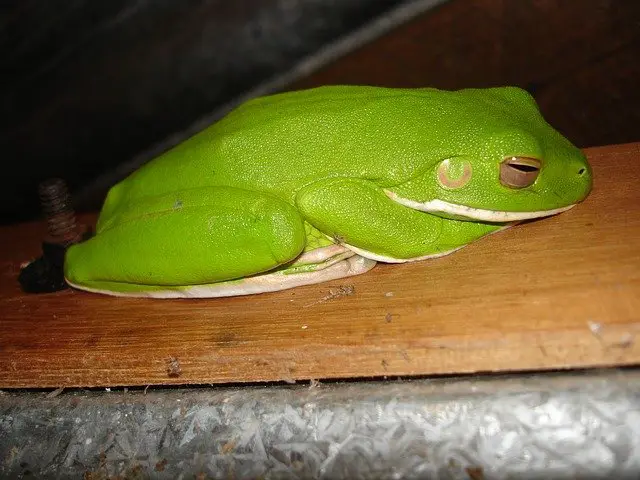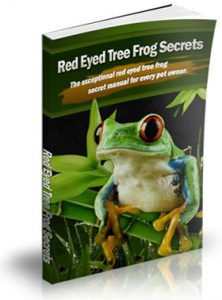If you’re a frog lover who’s interested in raising multiple kinds of tree frogs, you may be wondering, Can red-eyed tree frogs live with white tree frogs? Frogs are social amphibians and hang out in groups, so many of the same species and sometimes similar species may live in the same tank. However, the white’s tree frog has a reputation for being greedy and eating any food he can get his tongue on, which will cause him to quickly become overweight if you don’t monitor his diet closely.
Housing your red-eyed tree frog and white’s tree frog together when they are juveniles is okay if necessary because young frogs need to eat more often. Once older, it’s best to move the white’s tree frog to his own tank or to a tank with other white’s tree frogs to ensure he doesn’t eat up all of the other frog’s food.
Red-eyed tree frog
Red-eyed tree frogs natural habitat is a rainforest environment in Mexico, Columbia, and Central America. They are the most well known and kept frogs in the world. They are beautiful and colorful little creatures with big red eyes, orange feet, bright green, and blue skin. The vast array of colors helps them hide from predators in their natural habitable. They also have a defense mechanism in which they close their eyes and easily blend in with the foliage around them when they are scared.
They are cute and friendly little frogs who stay close to other red-eyed tree frogs but are only social during mating season when trying to find a mate or competing with male frogs for a mate. These guys can share a tank (and food) with any other tree frogs who are also capable of sharing. The frogs are carnivores, and their diet mostly consists of bugs, including grasshoppers, moths, flies, and crickets. Still, they will also eat tadpoles or baby frogs.
The best roommates for the red-eyed tree frogs
The best roommate for red-eyed tree frogs is other red-eyed tree frogs, but they can also share a tank with several different types of tree frogs of similar size if needed. Some of those other frogs include:
- American green tree frogs
- White-lipped tree frogs
- Grey tree frogs
- Barking tree frogs
White’s tree frog
White’s tree frogs natural habitat is forested or moist environments in New Guinea, Australia, and New Zealand. However, they can thrive in many habitats. They have backs that vary in color. They can be light blue, gray, or even emerald green, with white bellies. They are also known for having cute little faces and appear to be smiling.
These little guys, or not so small, are pretty big for tree frogs, and as stated earlier, if you don’t watch their diets, they can become overweight. These frogs have a diet that mostly consists of insects, including locusts, roaches, and moths.
White’s tree frogs are adorable and friendly
When it comes to their nature, these little frogs can become relatively tame and laid back. They don’t mind a bit if you handle them and would love to hang out with you. Just make sure to remove any lotions or liquids, or even soaps from your hands that could be toxic to them. Like all amphibians, their skin is very absorbent, and you wouldn’t want to harm your little froggy friend accidentally.
They are also friendly with other tree frogs but can quickly become stressed if housed around different species. These guys, also referred to as dumpy frogs, don’t really have any way to defend themselves and usually stay high up in trees in their natural habitat. Their tank should also include plenty of branches to replicate this, so they feel at home. They also have some great working suctioning footpads, so ensure the tank’s top is closed tightly.
Conclusion
Never assume all frogs should be cared for the same or live in the same environment. The Argentinian Horned Frogs, for example, will eat any smaller frogs in their area if given the opportunity. All frogs come from different parts of the world and have their own different needs.
Tree frogs are amazing little creatures. They are adorable and fascinating to watch. Most of them are even friendly and don’t mind if you hold them. They are also easily cared for at that! It’s no wonder that many frog lovers find them to be the perfect beginner’s amphibian pets. There are some things to watch for, such as which types can live together in tanks. As this article pointed out, red-eyed tree frogs and white’s tree frogs should not live together in a tan except for in early life if necessary.





